If you want to get a realistic glimpse of urban life in the late 19th century in Paris, then this amazing Realism painting is the masterpiece you want to check out.
Gustave Caillebotte (1848-1894) was an individualistic painter who started exhibiting his paintings among the Impressionist artists in the 1870s.
His style differed quite a bit as it’s reminiscent of the paintings of Realism artists. That’s mainly because of the new emerging technology at the time that became one of his great interests.
In this article, you’ll discover some of the most interesting facts about Paris Street, Rainy Day by Gustave Caillebotte, one of the ultimate masterpieces of the late-19th century for multiple reasons.
1. The painting was completed in the late 1870s
Gustave Caillebotte was born in an upper)class family in Paris and he spent his entire life in and around the city.
Although he was interested in the world of art from a young age, he never really picked up his brushes until after the Franco-Prussian War in which he served between July 1870 and March 1871.
Shortly before the war, he had earned a law degree and was qualified to practice law the moment the war broke out.
He briefly entered the École des Beaux-Arts but mostly spent his time hanging out with the emerging Impressionists.
He completed this painting in 1877, a period in history in which this group of artists was already started exhibiting their Impressionist paintings.
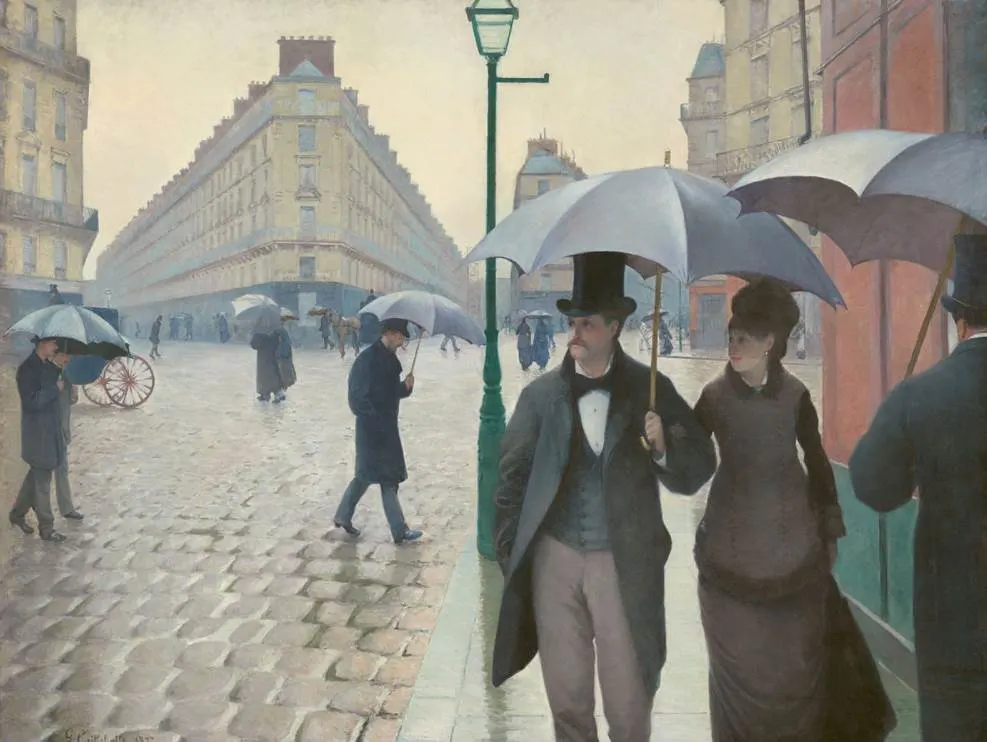
2. It depicts an intersection in the northern part of Paris

The painting depicts a busy city intersection known today as the “Place du Dublin.” Back then, the square in which 7 different streets meet was called the “Place du Moscou.”
This city square can be found just north of the Gare Saint-Lazare, one of the six major termini stations in the city.
The painting depicts the scene looking north toward the Place du Dublin. The Neoclassical buildings in the painting were only recently constructed at the time.
Shortly before this painting was completed, this area would have been nothing more than a hill just outside of the city center. The façades of these buildings must have been quite astonishing at the time.
The central block of buildings housed a pharmacy on the ground floor, and as you can see, it still serves this purpose today.

3. The shade of light indicates what time of the year the painting depicts
The scene looks gloomy and all the figures appear to be holding an umbrella to cover themselves from the rain.
Some art historians have noted that it appears as if they are hiding from other people passing by as well. This turns this urban landscape into a rather desolate place.
The shade of light indicates that this scene takes place on a cold and rainy winter afternoon.

4. Multiple elements indicate the artist’s interest in photography
Gustave Caillebotte befriended several Impressionist artists during the 1870s, most notably Edgar Degas (1834-1917).
He visited the first exhibition of Impressionists in 1874 but didn’t participate just yet. It did, however, inspire him so much that he fully focused on pursuing a career in art.
Unlike the Impressionists who often used wild brushstrokes and who loved to paint outdoors, Caillebotte had a more realistic approach to his art.
This is because he was influenced by photography, a medium that was still pretty much in its infancy at the time.
The way this approach is reflected in Paris Street, Rainy Day is as follows:
- The figures in the foreground appear to be out of focus.
- The Figures in the central part are much clearer visible than the ones in the background.
- Some figures appear to be cropped into the scene such as the man on the right.
Because of this approach, his paintings are much more aligned with the paintings of Gustave Courbet and Jean-François Millet, artists who only painted what they could see.

5. Caillebotte made multiple studies and a preparatory drawing
Caillebotte didn’t set up his easel on what was then known as the Place du Moscou but rather made several preparatory studies and drawings.
This allowed him to paint this monumental work of art in his studio, something he worked on for several months.
He spent a lot of time working on the perspective lines of the painting and how he could best integrate a large number of figures into the composition.
This becomes evident when we take a look at a preparatory sketch he made before he started painting which shows the two-point perspective he used.
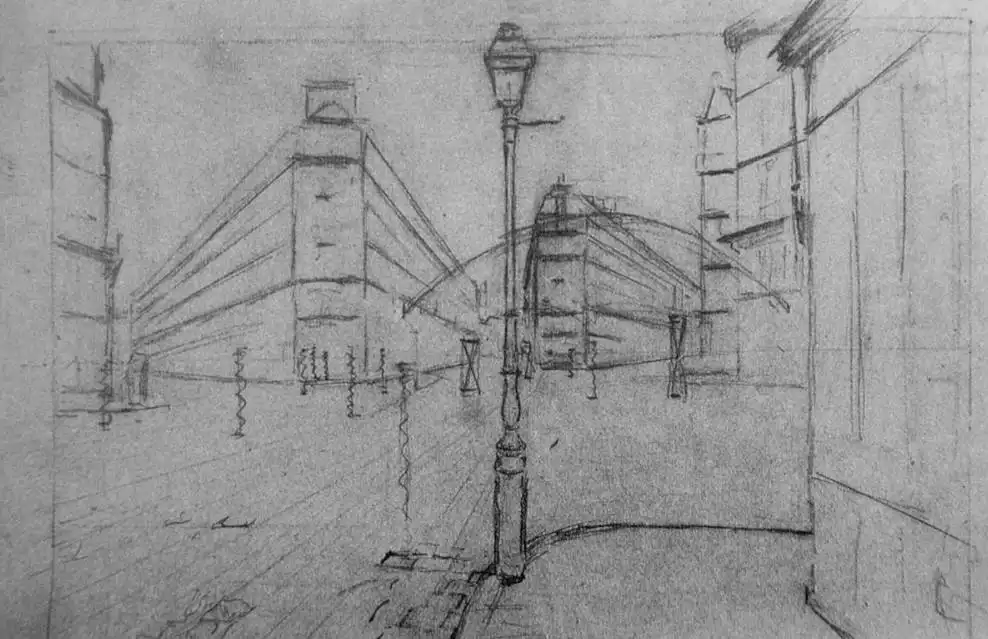
6. The painting was well-received at the third exhibition of Impressionists
Although Caillebotte visited the first Impressionist Exhibition in 1874, he didn’t yet participate in it.
He did, however, submit 8 paintings for the second exhibition in 1876, something that stresses his enthusiasm after his initial visit.
Among these works was one of his ultimate masterpieces called “Les Raboteurs de Parquet” (1875) or “The Floor Scrapers.”
This painting was rejected for the Paris Salon but received a lot of praise from critics when it was exhibited with the Impressionists. It’s now part of the collection of the Musée d’Orsay in Paris.
Paris Street, Rainy Day was exhibited at the third Impressionist exhibition in 1877 and received an equal amount of praise.
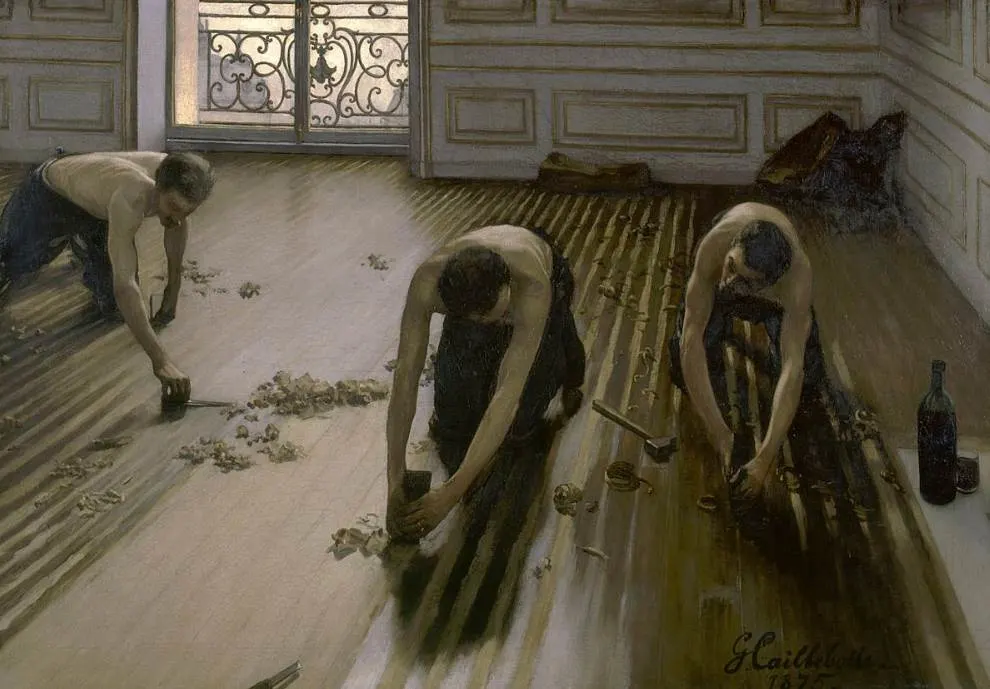
7. It inspired an American artist who painted a similar scene in Boston
The respect for Caillebotte’s work didn’t just come from contemporary art critics, his work was also admired by fellow artists.
One of these was an American artist named Frederick Childe Hassam (1859-1934), one of the American Impressionists who brought this artistic style to the United States.
Less than a decade after the French artist completed one of his ultimate masterpieces, Childe Hassam completed a work titled “Rainy Day, Boston” (1885).
It’s easy to see the striking resemblance between the two paintings as it depicts a similar rainy scene in Boston.
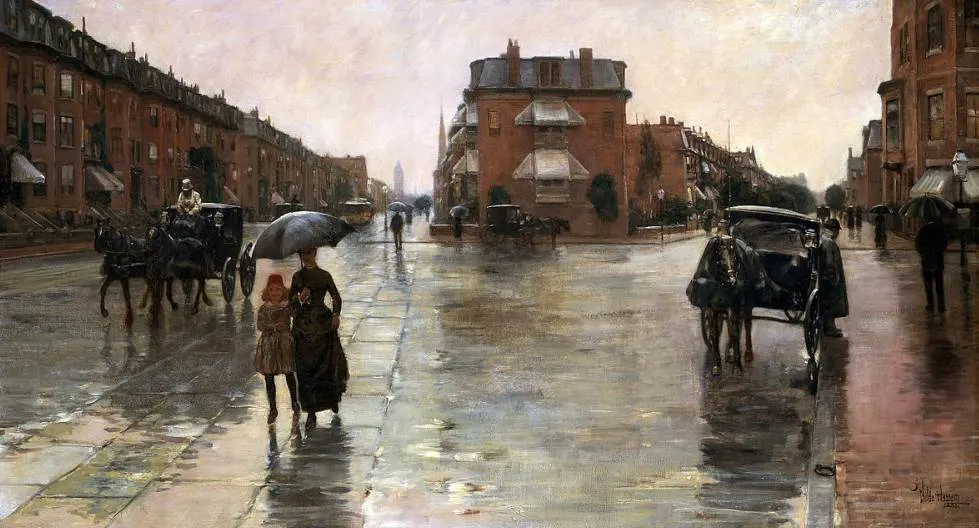
8. It never left the family’s collection until the mid-20th century
The artist was not only a painter but also an avid art collector. He acquired dozens of Impressionist and Post-Impressionist paintings and bequeathed 68 of them to the French state.
Many of his paintings never left the family’s collection because he had stipulated in his will that they were supposed to be displayed at Luxembourg Palace and the Louvre Museum.
It wasn’t until the year 1955 that it was sold to an American art collector named Walter P. Chrysler Jr. (1909-1988), the son of Walter Chrysler (1875-1940), the founder of the Crysler Corporation.
9. How big is Paris Street, Rainy Day by Gustave Caillebotte?
The painting provides such an amazing view of life in Paris in the late-19th century because of the sheer size of the work.
Paris Street, Rainy Day by Gustave Caillebotte is an oil on canvas painting with dimensions of 212.2 × 276.2 centimeters (83.5 × 108.7 inches).
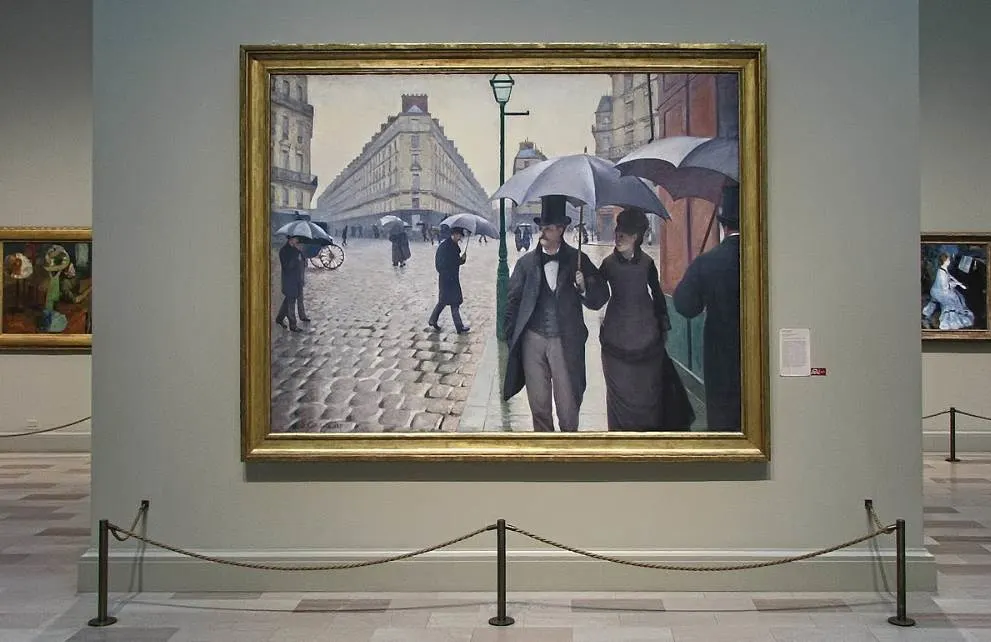
10. Where is the painting located today?
Chrysler didn’t hold onto the painting for too long because he subsequently sold it to the most popular museum in Chicago in 1967.
Today, this masterpiece of the late-19th century can still be admired at the Art Institute of Chicago in Grant Park in the heart of the city.

